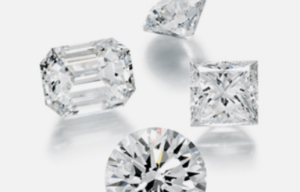Fancy Coloured Diamonds
The most valuable diamonds are the most rare. This is why colourless diamonds are so highly valued. When it comes to fancy coloured diamonds, not all colours are equal. Some colours are rarer and therefore more valued compared to others.
Traditionally, the so-called white diamonds which are really colourless have been the most popular. Now, coloured diamonds are giving white diamonds some much-needed competition. Because it is so rare to find two coloured diamonds that look alike, more and more people are turning to coloured gems in search of uniqueness.
Diamonds are classic gemstones that have been adored for generations, and they create an impression of elegance. The way they reflect light is arresting.
Colour
Usually, diamonds are considered more valuable with less colour. But outside of the normal range, when you are looking at fancy coloured diamonds, saturated blues, pinks, and greens are the rarest and therefore the most highly valued.
A small variation in colour can massively impact the value of a diamond.
Yellows as well as browns are not so rare, but most other colours are rare and valuable. These colours are considered fancy colours even when they are lighter and not as highly saturated. But the colour must be visible with the stone lying face up.
The most rare fancy coloured diamonds are blue, green, and red diamonds in medium tones and darker. Red colours are high value and extremely hard to find.
Pure pinks are popular. They beat orange, purple, grey, and brown tones in popularity. Some of the more attractive pinks are marketed as “rose coloured” while the purple ones are sold as “mauve”.
As for blue diamonds, they are some of the rarest in the market. Blue diamonds don’t have the same colour saturation as sapphires. They have hints of grey in them most of the time. The blue hues occur because of boron impurities within the diamond. Higher amounts of boron will create a deeper blue.
The typical fancy green diamond is light-toned with muted colours. They typically have a greyish or brownish cast. Fancy green diamonds will often look close to a yellowish shade of green. The colour is also superficial and rarely spreads beneath the surface of the stone. For this reason, diamond cutters will preserve the natural rough around the girdle as much as possible.
What gives fancy green diamonds their characteristic colour is the displacement of carbon atoms within the crystal by radiation. This typically happens in diamonds deposited somewhere close to a radioactive rock. It is rare to find naturally occurring green diamonds and because of the very real possibility of treatment, gem experts examine green diamonds very carefully to be sure that they are not artificially treated. They use sophisticated methods of geological testing to establish the real origin of the colour of a green diamond.
Brown diamonds are the most abundant among fancy coloured diamonds. They have been in use for longer than other kinds of fancy coloured diamonds. As early as the second century, Romans were setting brown diamonds into rings. Today, they are not as popular as they were then. It has taken time.
At first, brown diamonds were believed to be good for industrial use only. But in the 80s, Australians found lots of brown diamonds in the Argyle Mines and they started setting them in jewellery and branding them with names like champagne or cognac. Now brown diamonds have caught on and jewellery designs set with brown diamonds are a popular medium-priced jewellery item. Consumers like to see reddish or warm gold brown diamond stones in their jewellery pieces. You will often notice hints of orange, green, red, or yellow in the brown diamond.
Yellow diamonds are the second most common among fancy coloured diamonds. Jewellers often brand yellow diamonds as ‘canary.’ Canary if not the correct term for grading yellow diamonds but it is a popular term for describing fancy coloured diamonds which are yellow in colour.
Black diamonds did not have much of a market before the late 90s. Jewellers then started using them to contrast against colourless diamonds on pavé settings. Then these previously unappreciated diamonds became popular.
Fancy white diamonds look milky white and they sometimes display shifting flashes of colour against a pale or dark background.
Grey diamonds typically have high levels of hydrogen. This impurity is believed to bring about the characteristic grey colour in them.
Clarity
Colour is the biggest determinant of the value of a fancy coloured diamond. A fancy coloured diamond can have poor clarity because of too many inclusions, but connoisseurs will still value it if it has a beautiful face-up colour. But if the inclusions pose a threat to the gem’s durability, the fancy coloured diamond will lose much of its value. Some fancy coloured diamonds show colour graining. This is also an inclusion.
